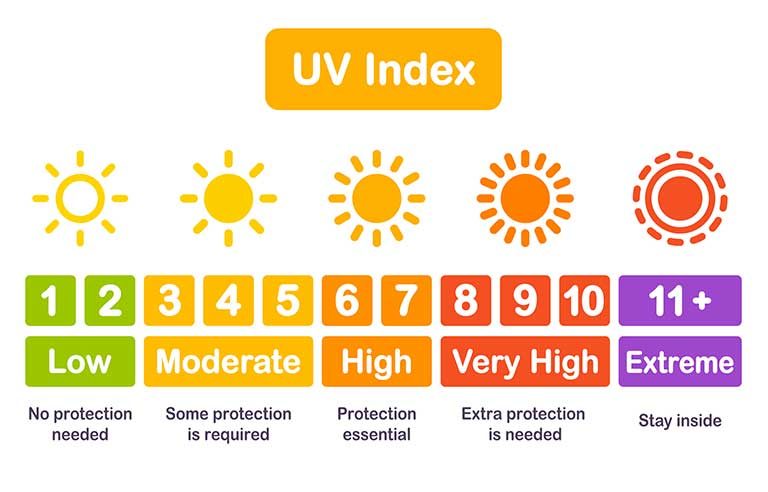What’s the UV Index?

Sun exposure doesn’t just happen at the beach, on the playground or in the garden. It also happens on the way to the mailbox, in your car and even sitting by a window in your home.
You may have noticed the UV Index on your weather app or heard it mentioned by your local meteorologist. But what does it mean?
The UV Index is a forecast of the risk of overexposure to ultraviolet radiation in your area for a given day, calculated by the National Weather Service and published by the Environmental Protection Agency. It measures this risk on a scale of 1 to 11, as outlined below:
0 to 2: Low
3 to 5: Moderate
6 to 7: High
8 to 10: Very high
11 or more: Extreme
Although sunscreen is a useful tool, it shouldn’t be your only form of protection. In fact, people who aren’t aware of its limitations can be left with a false sense of security and end up exposing themselves to greater damage.
For those reasons, experts recommend a “layered approach,” combining sunscreen with alternative forms of protection:
- Wear protective clothing, such as wide-brimmed hats, UV-blocking sunglasses, long-sleeved shirts, and long pants or skirts. Hats are especially important for people with thinning hair.
- Reschedule activities to avoid the hours when the sun is most intense, roughly between 10 a.m. and 4 p.m. (and especially close to noon).
- When possible, stay in a shaded area such as under a tree or beach umbrella.
Post a comment to this article
Safety+Health welcomes comments that promote respectful dialogue. Please stay on topic. Comments that contain personal attacks, profanity or abusive language – or those aggressively promoting products or services – will be removed. We reserve the right to determine which comments violate our comment policy. (Anonymous comments are welcome; merely skip the “name” field in the comment box. An email address is required but will not be included with your comment.)
